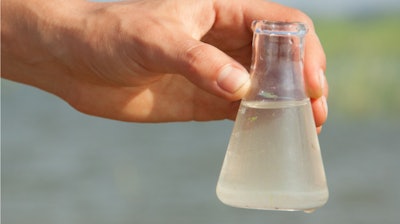
CONVENT, LA. (AP) — Officials with a company that owns an unstable phosphogypsum pile and a lake of acidic water atop it say they're encouraged by recent efforts to halt a potential environmental disaster in a Louisiana parish.
Unexpected movement along the northern face of the waste pile has raised fears that the pile could fail catastrophically and release hundreds of millions of gallons of acidic water laced with heavy metals and trace radioactivity into swamps and waterways around the Uncle Sam plant near Convent, The Advocate reported. Mosaic Fertilizer says it doesn't have sufficient data to calculate the risk that a bulge in the pile wall will give away, but believes it's falling.
In recent weeks, Mosaic has been trying to drain the 140-acre (around 57-hectare) lake's acidic water held atop the 200-foot-high (around 61-meter-high) pile and reduce pressure on the sliding wall of gypsum. It has also trucked in dirt to act as a kind of brake, company officials said.
Mosaic said the pile is moving more slowly but is still continuing to shift — between a foot and 2 feet (0.6 meters) since Jan. 11. Its modeling shows that any failure would release the acidic water gradually and won't escape company property. The water would be trapped in a few hundred acres of cane fields, according to documents.
"We are encouraged by the trend showing that the lateral movement on the north slope is slowing," Mosaic spokeswoman Callie Neslund said.
However, several environmentalists have said the risk to the nearby Blind River and the surrounding swamps is real should the water ever get out.
Philip Bucolo, an aquatic biologist and visiting assistant professor at Loyola University in New Orleans, said the water's high acidity would be harmful to freshwater plants it contacts, though waterways would dilute its acidity farther away from the plant.
Although Bucolo couldn't say for certain if the acidic water could penetrate the soil and escape underground if trapped in cane fields, he said the company and regulators should be obligated to prove that it wouldn't.
Wilma Subra, a chemist and technical adviser to the nonprofit Louisiana Environmental Action Network, said the metals found in the water don't break down but can accumulate over time and concentrate in plants along with animals if the contaminants escape.
Mosaic, the Louisiana Department of Environmental Quality and the U.S. Environmental Protection Agency have not affirmatively said that the gypsum wall won't give way eventually. They also haven't said how much movement in the northern wall would be necessary for a failure to occur or how much drainage of the lake is necessary to stop the movement.
Mosaic said it had "insufficient data" to compute the daily probability of a failure of the northern face of the gypsum pile or its rate of movement. The company noted that its actions to drain the lake and bring in dirt to brake the wall's movement are raising the probability that the rate of movement will slow.
The company has suggested that historical data for other mining waste piles show that the annual probability of a sliding failure of the Uncle Sam pile can be expected to drop from less than 0.5 percent on Jan. 11 to 0.0001 percent at an undetermined future date when the safety factor is high enough.
It's not clear from documents provided Tuesday by the EPA when that level of safety would be reached at Uncle Sam, the Advocate reported.






















